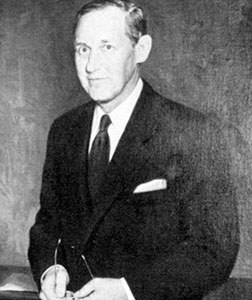http://www.slate.com/id/2209781/By Charles Peters and Timothy NoahPosted Monday, Jan. 26, 2009, at 7:00 PM ET
President Obama's $825 billion economic-stimulus package needs a lot less PWA and a lot more CWA.
The PWA was the Public Works Administration, led by Harold Ickes Sr. The CWA was the Civil Works Administration, led by Harry Hopkins. Both were New Deal agencies created in 1933 to get Americans quickly back to work at a time when unemployment reached 25 percent, its highest point in U.S. history. The PWA failed. The CWA succeeded.
The strategy behind Obama's stimulus bill resembles that of the PWA. Like the stimulus, the PWA tackled unemployment indirectly by spending money largely through private contractors. That handicap�worsened by Ickes' cautious-to-a-fault management style�resulted in only $110 million of the program's authorized $3.3 billion getting spent during the program's crucial first year. Frustrated by Ickes' poky pace, Roosevelt yielded to the pleas of his relief administrator, Harry Hopkins, to help get unemployed workers through the coming winter by putting them directly onto the federal payroll. Roosevelt had been reluctant to create a federal work program for fear of alienating organized labor. Hopkins overcame that worry by pointing out that Samuel Gompers, founder of the American Federation of Labor, had in 1898 proposed essentially the same idea. Roosevelt diverted not quite one-third of Ickes' PWA budget to Hopkins' CWA with the goal of putting to work 4 million people. As a percentage of the population, that would be the equivalent of putting 10 million people to work today. In his first weekly radio address, Obama pledged that the stimulus package would "save or create 3 to 4 million jobs over the next few years." (His budget director estimates that 75 percent of the money will be spent within 18 months.) Hopkins got there within two months.
The current economic downturn has yet to bring us near the depths of the Great Depression, but the situation is dire. The official unemployment rate now stands at 7.2 percent, a figure that rises to more than 13 percent when you add in people who've given up looking for work and people working part-time only because they can't find full-time work. The economy shed more jobs last year than in any single year since 1945. "Three to 4 million jobs over the next few years"? With the country currently losing half a million jobs each month, that won't be fast enough.

CWA head Harry Hopkins
The CWA moved more swiftly than the PWA in part because of the difference in temperament between Hopkins and Ickes. Ickes was so fearful that the PWA would appropriate funds to an unworthy or scandalous project that he dotted every I and crossed every T before spending a nickel. The advantage to this approach in the long run was that it led to many significant projects, including New York's Triborough Bridge. The disadvantage was that it didn't create jobs quickly. Hopkins' anxieties were focused on the prospect that the CWA would fail to provide a sufficient number of jobs to the people who desperately needed them. Better to get the money out the door, Hopkins believed, and to address any irregularities immediately as they came up. The CWA's field investigators, who included journalists Lorena Hickock and Martha Gellhorn, helped keep Hopkins on the right track. The CWA's programs were further scrutinized by Roosevelt's friend Frank Walker, who as president of the National Emergency Council supervised all the president's new alphabet agencies, and by Army Lt. Col. John C.H. Lee (at the direction of the War Department). Both men were deeply impressed by Hopkins' leadership. "I'd pay little attention to those who criticize the creation of CWA or its administration," Walker reported to Roosevelt after touring CWA projects around the country. "You have every reason to be proud." Lee, a military engineer, had the reputation of a hanging judge�serving later as one of Dwight Eisenhower's top generals during World War II, he earned the nickname "John Court House Lee." Yet Lee had nothing but admiration for Hopkins' "loose fluidity of organization" and marveled that Hopkins had in two months enlisted as many people as the Army had in 18 when the U.S. entered World War I. The CWA even won praise from Kansas Gov. Alf Landon, Roosevelt's future Republican opponent in the 1936 presidential election. "This civil-works program is one of the soundest, most constructive policies of your administration," Landon wrote FDR, "and I cannot urge too strongly its continuance."
FULL story at link.